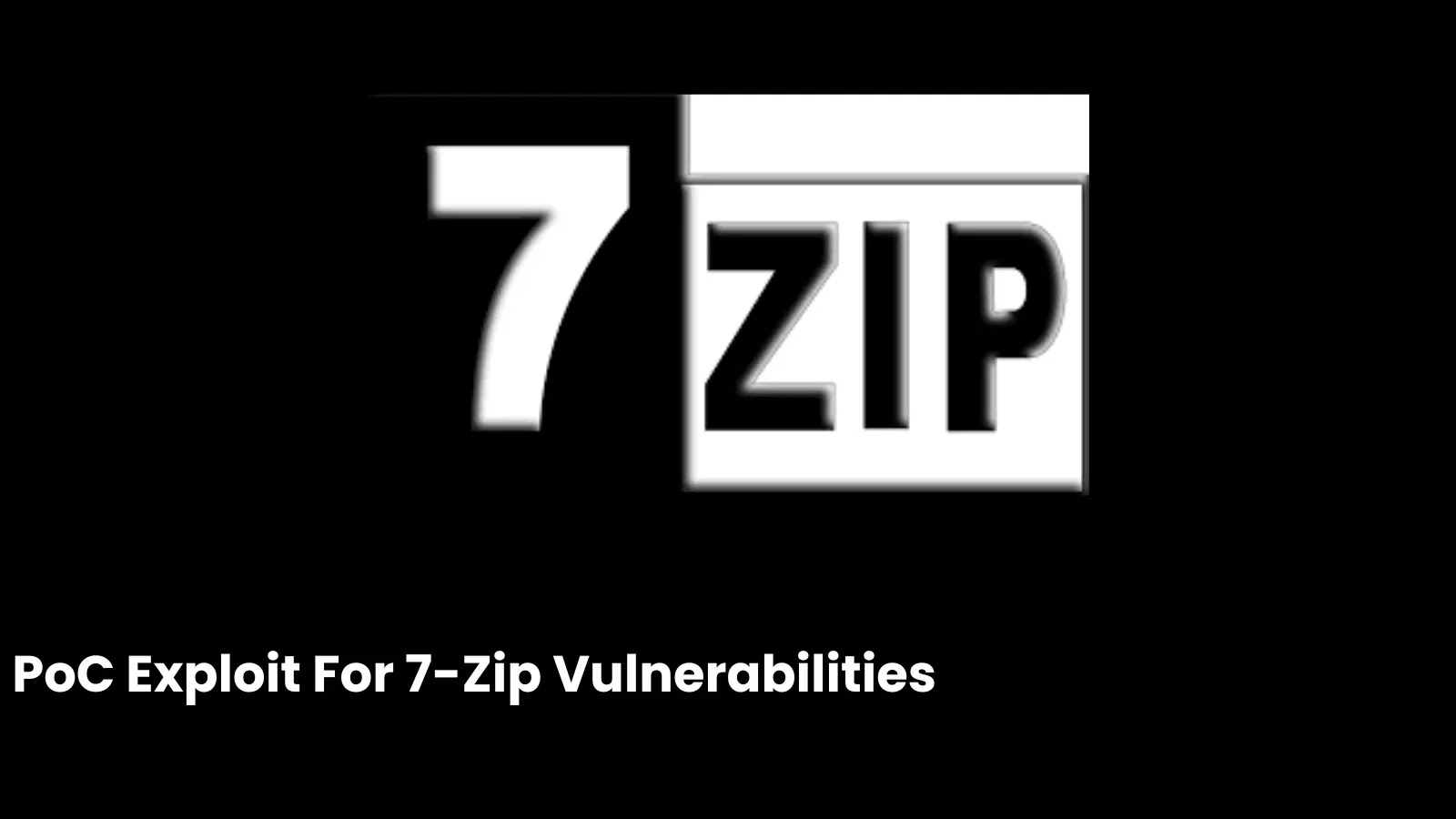
PoC Exploit Released for 7-Zip Vulnerabilities that Let Attackers Execute Arbitrary Code Remotely
Urgent Alert: PoC Exploit Unveiled for Critical 7-Zip Vulnerabilities Enabling Remote Code Execution
In the cybersecurity landscape, the speed at which vulnerabilities transition from disclosure to exploitation is a constant concern. A recent development has brought this into sharp focus: a proof-of-concept (PoC) exploit has been released for two critical vulnerabilities in the widely used file archiver, 7-Zip. These flaws, if exploited, could allow attackers to execute arbitrary code remotely simply by tricking users into opening a specially crafted malicious ZIP file. This revelation underscores the urgent need for robust security practices and immediate remediation.
Understanding the Threat: CVE-2025-11001 and CVE-2025-11002
The vulnerabilities, identified as CVE-2025-11001 and CVE-2025-11002, were publicly disclosed by the Zero Day Initiative (ZDI) on October 7, 2025. Both originate from improper handling of symbolic links during the ZIP file extraction process within 7-Zip. This improper handling creates a perilous pathway for attackers.
Specifically, these vulnerabilities could enable path traversal or arbitrary file write issues. Imagine an attacker crafting a ZIP file containing symbolic links that, when extracted by a vulnerable 7-Zip client, point to sensitive system directories or overwrite critical system files. This could lead to a variety of severe consequences, including:
- Remote Code Execution (RCE): The most severe outcome, allowing an attacker to run their own commands on the victim’s system, potentially taking full control.
- Data Exfiltration: Malicious manipulation of file paths could allow an attacker to read or copy sensitive data from restricted areas.
- System Instability or Denial of Service: Overwriting critical system files could render the operating system unusable.
The release of a PoC exploit heightens the urgency significantly. It means that the theoretical risk has become a practical threat, as the tools and methods for exploitation are now available, potentially to a wider range of malicious actors.
The Mechanics of Exploitation: Symbolic Link Abuse
At the core of these vulnerabilities is the way 7-Zip processes symbolic links (symlinks) embedded within an archive. A symbolic link is essentially a shortcut or pointer to another file or directory. When 7-Zip extracts an archive, it needs to correctly resolve these symlinks to ensure files are placed in their intended locations.
The flaws, as reported, likely bypass existing security checks designed to prevent “zip slip” or similar path traversal attacks. An attacker can construct a ZIP archive where symlinks within the archive point outside the intended extraction directory. For example, a symlink ostensibly pointing to “data.txt” within the archive’s internal structure could, in reality, point to “/etc/passwd” or “C:\Windows\System32” on the host system. When 7-Zip extracts a file through this manipulated symlink, it could write attacker-controlled content to a critical system file, thereby achieving RCE.
Remediation Actions: Securing Your Systems
Given the severity of these vulnerabilities and the existence of a PoC exploit, immediate action is paramount. System administrators, developers, and users must prioritize remediation to protect against potential attacks.
1. Update 7-Zip Immediately:
- Check the official 7-Zip website for the latest patched versions. As of this writing, users should seek out the most current stable release that addresses CVE-2025-11001 and CVE-2025-11002.
- Distribute the updated version across all endpoints where 7-Zip is installed. Automate this process using patch management systems where possible.
2. Exercise Caution with Untrusted Archives:
- Instruct users to be extremely wary of ZIP files received from unknown or suspicious sources.
- Avoid opening unsolicited attachments. Implement email gateway security that scans and ideally blocks known malicious file types.
3. Implement Least Privilege:
- Ensure that users operate with the principle of least privilege. This means users should not have administrative rights unless absolutely necessary. If a malicious ZIP file is extracted by a low-privilege user, the impact of RCE might be contained.
4. Enhance Endpoint Detection and Response (EDR):
- Ensure EDR solutions are up-to-date and configured to detect anomalous process behavior, especially concerning file modifications in critical system directories or unusual outbound network connections originating from processes like 7-Zip.
Detection and Mitigation Tools
While updating is the primary defense, several tools can assist in detecting potentially malicious archives or monitoring systems for signs of compromise.
| Tool Name | Purpose | Link |
|---|---|---|
| Official 7-Zip Website | Download the latest patched software | https://www.7-zip.org/ |
| YARA Rules | Signature-based detection of malicious files/archives | https://virustotal.github.io/yara/ |
| Endpoint Detection & Response (EDR) Solutions | Detect and respond to post-exploitation activities and anomalous behavior | (Vendor Specific – e.g., CrowdStrike, SentinelOne) |
| Secure Email Gateways (SEG) | Scan and filter email attachments for malicious content | (Vendor Specific – e.g., Proofpoint, Mimecast) |
Key Takeaways and Proactive Security
The release of a PoC exploit for CVE-2025-11001 and in 7-Zip is a stark reminder of the continuous threat landscape. Organizations and individual users must remain vigilant. Prioritizing software updates, implementing robust security policies, and fostering a security-aware culture are not merely best practices; they are critical defenses against sophisticated attacks. Patching these vulnerabilities is not just recommended; it is an imperative to protect against potential remote code execution and safeguard your digital assets.





